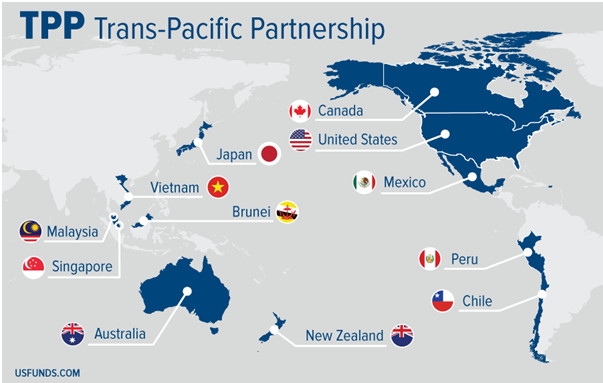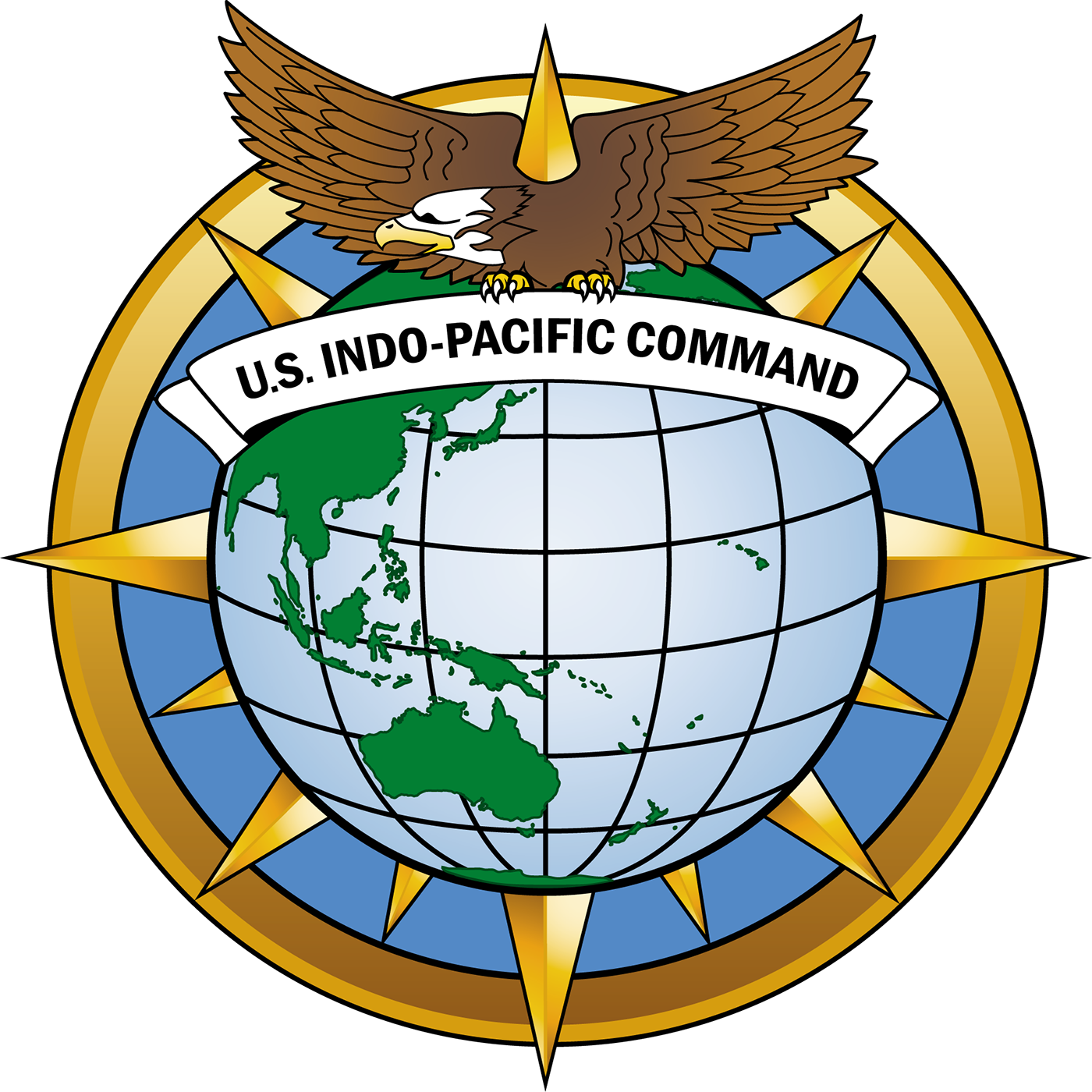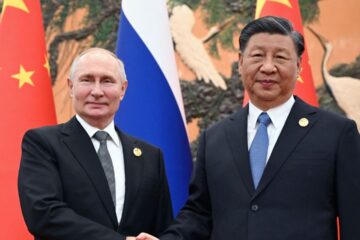SOUTH-EAST ASIA in the Middle of a Superpower Rivalry
This article is mainly a translation of Tom Miller’s article “Alerte Rouge en Asie du Sud-Est” published in the magazine Conflits in July 2021.
What you want to understand… 🤔
- How important is South-East Asia on the international stage?
- Has the US achieved its “Pivot to Asia”?
- How is China expanding its influence over South-East Asia?
- Is the ASEAN a united bloc? Is it closer to China or the US?
As the global competition between China and the United States intensifies, one part of the world is on the front line: South-East Asia. President Joe Biden wants to reverse the region’s shift towards China by strengthening US regional alliances. Members of the Association of South-East Asian Nations (ASEAN) fear that this superpower race will force them to choose a side and abandon a long tradition of non-alignment. In November 2018, Singapore’s prime minister Lee Hsien Loong warned that “the circumstances may come when the ASEAN may have to choose one or the other.” He added: “I am hoping that it’s not coming soon.”
I. How important is South-Asia globally ?
With a population of 650 million and an economy worth $3 trillion, Southeast Asia is a global supply chain hub. It accounts for 15% of global trade, a share that is growing as outsourced manufacturing leaves China. Foreign Direct investment inflows reached a record US$182 billion in 2019. Even though this amount decreased in absolute terms due to the pandemic (US$ 137billion in 2020), the global share of FDI destined to South-East Asia increased from 11.9% (2019) to 13.7% (2020). The superpower rivalry between the US and China could substantially disrupt trade and investment in the region with major repercussions for the global economy.

Strategically placed in the heart of the Indo-Pacific and in the shadow of China, this tropical corner of Asia has a long history of manoeuvring between external powers. Its origins as a geopolitical entity date back to the Cold War, when five states – Indonesia, Malaysia, the Philippines, Singapore and Thailand – founded the ASEAN as an anti-communist bloc in 1967. They were joined in the 1980s by Brunei and in the 1990s by Vietnam, Laos, Myanmar and Cambodia. Although often regarded as a “talking forum”, the ASEAN has helped bring peace, cohesion and prosperity to an extremely diverse and unstable region.
This unity is threatened by the China-US competition. At the moment, there is no clear ‘China bloc’ or ‘US bloc’ as there was during the Cold War. Certainly, the balance of power has shifted towards China in recent years. In fact, Cambodia and Laos are becoming China’s clients, while Thailand, Brunei and Malaysia have entered its orbit. Even ASEAN states closer to Washington, such as Singapore, do not criticise Beijing publicly. Nonetheless, the US has extensive defence partnerships with most ASEAN members as we will see later in this article. If either side exerts too much pressure, the ASEAN could break down in unpredictable ways.
II. A more Convincing US “Pivot to Asia” ?
In the Interim National Security Strategic Guidance, published in March, Joe Biden pledged to “revitalize America’s unmatched network of alliances and partnerships”. He charged Kurt Campbell with this take on this mission. Kurt Campbell was Assistant Secretary of State for East Asian and Pacific Affairs under Barrack Obama and he designed the “Pivot to Asia” policy. The latter’s objective was to progressively withdraw from the Middle East and Europe so as to expand the US influence to the Asia-Pacific region through multilateral agreements to counter-balance China’s weight. However, the “Pivot to Asia” has had mixed results partly due to Obama’s reluctance to adopt a hard line on China’s military activities in the South China Sea. This time, Joe Biden wants to be tougher.

A renewed focus on South-East Asia is needed after the neglect of the Trump years. On his first day in office, President Donald Trump abandoned the Trans-Pacific Partnership that was signed on February 4, 2016 between 12 countries of the region. This trade agreement was meant to be a pillar of the American “Pivot to Asia”.

As a result, Trump’s move effectively positioned Beijing at the centre of the region’s trade and investment networks. In fact, in November 2020 China signed a trade deal with 14 other Asian countries: the Regional Comprehensive Economic Partnership. Together, they almost represent 1/3 of the world population and 1/3 of the world GDP.

Trump has failed to fill several regional ambassadorial positions and, after attending the ASEAN summit in 2017 as an ‘official US dialogue partner’, he has not attended any subsequent ASEAN or East Asia summit. Instead, his administration has focused on security issues in the wider Indo-Pacific, prioritising relations with Quad countries (Quadrilateral Security Dialogue) namely Japan, India and Australia, without showing much interest in the heart of the region itself.
Meanwhile, Beijing has stepped up its own diplomatic efforts. Senior Chinese leaders have made numerous visits to all ASEAN countries, dangling promises of trade, investment and infrastructure. China has been the region’s largest trading partner since 2009, but it was only last year that the ASEAN overtook the EU as China’s largest trading partner. After a series of initial setbacks, several major Chinese-funded engineering projects are back on track, including Malaysia’s $12 billion East Coast Rail Link and Indonesia’s $4.6 billion Jakarta Bandung Line. The territorial dispute in the South China Sea remains an open wound and distrust of Beijing runs deep. Nevertheless, China and the ASEAN are weaving an ever-tightening web of mutual dependence.
III. South-Asian Populations about China’s Influence
China’s advances and the United States’ missteps over the past decade have radically altered the regional balance of power. The latest “State of Southeast Asia Survey”, published by the ISEAS-Yusof Ishak Institute in Singapore, provides a useful barometer of elite opinion in the ASEAN. It surveyed more than 1,000 people from academia, government, business and civil society in the ten member states just after Joe Biden’s election victory. Despite considerable disagreement on some issues, several clear conclusions emerged.
- China is globally seen as the most influential regional power – economically, politically and strategically. A large majority believe that China intends to make Southeast Asia its sphere of influence or is already gradually replacing the US as the leading regional power.
- There is strong support for Washington‘s strategic presence in Southeast Asia. However, most respondents fear that the competition with China will force states to align with one side or the other.
- If the ASEAN were forced to align itself with either China or the US, respondents from Brunei and Laos would choose China. Respondents from the Philippines, Indonesia, Singapore and Vietnam would rather side with the US. Thailand, Myanmar, Malaysia and Cambodia are still hesitant. Overall between 2020 and 2021, more respondents picked the US over China: 53.6% in 2020 and 61.5% in 2021.
- Such a binary choice is seen as a failure and there is clear support for maintaining the current practice of hedging between China, the US, Japan and the EU.
One conclusion that can be drawn from this survey is that Washington needs to do a much better job of shaping public opinion. The new orthodoxy is that China will “inevitably become the dominant regional power, while the US is doomed to inexorable decline”. Nevertheless, in his new book Where Great Powers Meet: America and China in Southeast Asia, the American political scientist David Shambaugh shows that this view is too simplistic. While it is true that China’s economic and diplomatic influence has eclipsed that of the United States, the latter still has deep commercial roots and a powerful security presence. “The US is therefore an ‘underestimated power’,” he argues, “while China is overestimated.”

Above all, the US remains the dominant military power in the region. It has close military ties with most ASEAN members, even if they are careful not to make this known. Malaysia, the Philippines, Singapore and Thailand all host US troops who conduct regular bilateral exercises. Indeed, a rarely acknowledged truth is that the US provides the hard power that its regional detractors depend on for their security. For instance, the Philippines’ President Rodrigo Duterte has been a virulent critic of the US since his assumption of duties in 2016, but recently he reaffirmed his country’s attachment to the Philippines-US Visiting Forces Agreement signed in 1998. The latter facilitates US military interventions and training manoeuvres on its territory. Besides, the US held its first multilateral military exercise with all ten ASEAN states in 2019: a clear evidence that Southeast Asia is not yet in China’s pocket. We can also add that 60% of the US Navy’s fleet can be found in the wider Indo-Pacific region.
IV. A Problem of Alignment
Each South-East Asian nation occupies a different position on the spectrum of relations between the two superpowers, with no state being completely neutral. David Shambaugh places 7 states closer to China: Cambodia (closest), Laos, Myanmar, Malaysia, Indonesia, Brunei and Thailand (farthest). 3 states are closer to the US – Vietnam, Singapore and the Philippines – although each maintains a strategic distance. These positions are not fixed, allowing each state to tilt as it wishes. Nonetheless, a hardening rivalry between the US and China could force a permanent realignment.
The Biden administration’s Interim National Security Strategic Guidance lists Singapore and Vietnam as the US’s closest partners. Singapore is not an official US ally but is a much more reliable partner than Thailand or the Philippines that have moved closer to China in recent years. Their loss would be a major blow to US security. Vietnam is increasingly seen as an interesting alternative, especially as a military partner in the South China Sea. It would not be surprising if Biden tried to integrate it into an expanded Quadrilateral Strategic Dialogue (Quad). However, Vietnam’s geographical proximity to China and its dependence on Chinese imports mean that it will almost certainly avoid an open alliance with the US.

A military conflict in the South China Sea would be the most obvious trigger for regional realignment, especially if it involves the US Navy. Given that Vietnam, Malaysia, the Philippines and Brunei all dispute China’s territorial claims, a serious confrontation cannot be ruled out. In that case, the Cold War fissure between the maritime and continental halves of Southeast Asia could reopen. With the exception of Vietnam, the other four mainland Southeast Asian states – Thailand, Laos, Cambodia and Myanmar – have no direct interest in the South China Sea. China’s construction of dams on the sources of the Mekong River also means that Beijing literally has power over the life and death of 60 million people living in the Mekong basin. China’s immediate neighbours cannot afford to upset it.

V. Risk of Shattering the South-East Asian Peace
This situation raises the prospect of a split within the ASEAN itself. Given their reputation for debilitating political paralysis, its leaders would certainly find it difficult to negotiate among themselves in the event of a serious conflict between the US and China. In July-August 2020, the Singaporean Prime Minister Lee warns that any attempt by Washington or Beijing to impose a binary choice on the region will trigger a confrontation that will last for decades and jeopardise the long-awaited Asian century.



4 Comments
CHINA in AFRICA, a “shared future”? – geopol-trotters · 11 September 2023 at 6:51 am
[…] over the years with Africa. We should also not forget that China’s main security focus is South-East Asia and more specifically […]
The USA: after Trump, a Return to Normal ? - geopol-trotters · 1 December 2022 at 8:16 pm
[…] in order to counter-balance the global influence of China. For example, in November 2020, China signed a trade deal with 14 other Asian countries: the Regional Comprehensive Economic Partnership. Together they almost represent 1/3 of the world […]
[Part 3] Why did the US fail in Afghanistan (2001-2021) - geopol-trotters · 26 November 2022 at 7:41 pm
[…] The US withdrawal from Afghanistan is part of an overall withdrawal from the Middle East: in Iraq, the US military mission is supposed to end by the end of 2021 (few troops will remain to help local armed forces maintain security) and in Syria, 900 US troops are still present on the ground to train Syrian Democratic Forces fight jihadist groups. The US are currently undertaking a strategic reorientation towards the Asia-Pacific region in order to counter Chinese influence. […]
History of China and the World since 1949 - geopol-trotters · 3 November 2022 at 6:42 am
[…] ceded by the UK and Portugal in 1997 and 1999. Furthermore, it is a major member of the ASEAN+3, an economic and political association created in 1967 and that gathers 13 South-East Asian […]